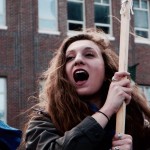
This past July, at the peak of another sweltering Israeli summer, I hopped onto bus 218 from Jerusalem to Ramallah, the primary Palestinian-Arab city in area A of Judea and Samaria, more commonly known as the West Bank. 45 minutes and one security checkpoint later, the rolling hills of Jerusalem, dotted with the blue and white of the Israeli flag, blended into bustling landscapes sprinkled with red, black, and green.
Ramallah is a city like any other: alive with sounds and smells, ripe with an energy unique to largely populated areas. In Ramallah, I saw gorgeous apartment buildings, schools, and towering mosques contrasted with littered streets. In Ramallah, I witnessed girls in tank tops and shorts drinking iced coffees in front of mosques during the call to prayer. In this landscape of life, one overwhelming element felt out of place: in Ramallah, everywhere you turn, a vehement hatred of Israel and a denial of Jewish history in the land of Israel pulses throughout the city, an overwhelming undercurrent of identity oppression. In Ramallah, streets and squares are named after internationally recognized terrorists. In Ramallah, the main museum in the center of the city, entitled “Yasser Arafat Museum”, complete with marble floors, decorated guards, and an extravagant wading pool, contains exhibits which praise the “intifadas”, the terror wars, inflicted upon Jews and largely orchestrated by Palestinian leaders themselves.
To read the rest of this article click here.
Contributed by former CAMERA intern Lilia Gaufberg.

